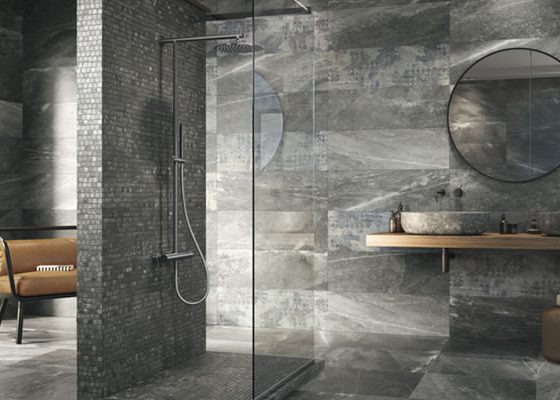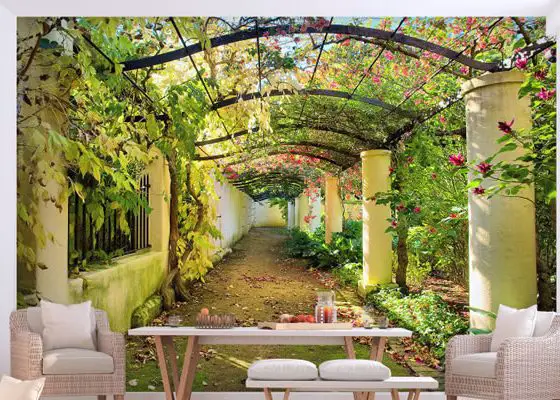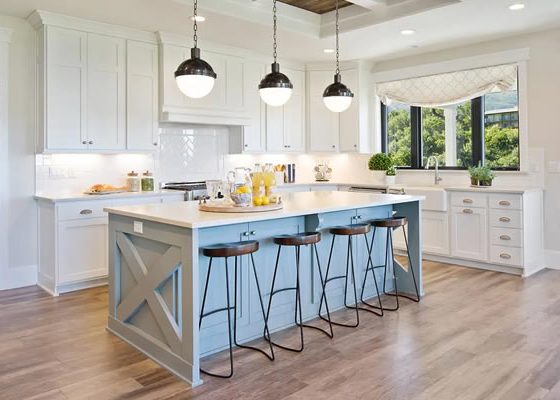Large wall stencils are a fun and unique way to decorate your walls. Stencils allow you to decorate with your own touch, letting your personality shine through.
What are Stencils?
A stencil is basically a cut-out shape that outlines an image. Stenciling allows you to repeat the exact same image over and over again. Stenciling with letters allows you to create words as perfectly as a typewriter or computer would.
The art of stenciling has been around for thousands of years. Egyptians used stencils to decorate tombs with images and hieroglyphs. Ancient Greeks and Romans used stencils on signs and wall murals. Stencils have even been dated as far back as 30,000 B.C., in the early cave paintings of primitive man. The earliest stencils were thought to be made from leaves and animal skins.
Soon after the Chinese invented paper, they started making stencil cutouts from this material. Paper stencils were used to make patterns on porcelain and textiles and these stencils were the forerunners of the silk screening process.
How to Stencil
Before you begin to stencil your walls you’ll need to make sure they are properly prepared. The wall needs to be clean and clear of any cracked or flaking paint. If necessary, you may need to repaint. A flat latex or oil based paint works best for stenciling.
Next you will need to organize your supplies. You should have the following supplies on hand to start a stenciling project:
- Marking chalk or pencil
- Stencil glue or masking tape
- Level and ruler
- Stencil brushes
- Stencil paint
- Paint pallet or plate
- Paper towels
Now it is time to position your stencil in the area you wish to apply it. The best method for this is to use a repositionable contact spray adhesive. Spraying a light adhesive on the back of the stencil will allow you to reposition the stencil at least 6 or 7 times. When it looses its tack, simply reapply the glue.
Pour a small amount of paint on your pallet or plate and dip just the tip of the paintbrush into the paint. Remove any excess paint with a paper towel. Too much paint on the brush can cause the paint to bleed under the edge of the stencil. You can add the color in layers until the shade is right. Start on the edges of the cutout and work your way towards the middle. Lightly tap the brush against the cutout to fill in color or try using a circular motion within the cutout.
If you’re applying more than one color, always start with the lightest color first. Wait for the first color to dry completely before adding the second color.
Ideas for Large Wall Stencils
A large wall stencil is an alternative way of decorating your wall instead of hanging pictures or wall art.
Plants and trees are the most popular types of large stencils for walls. A tree stencil can literally span almost the entire height of the wall. Tall flowers such as poppies and sunflowers also make a nice large wall pattern.
Large all-over patterns can also work for walls. These could include animal prints, floral patterns, geometric patterns, mural patterns or abstract designs.
Large wall stencils that cover most or all of an entire wall look good on one wall or perhaps two walls. However you can easily overwhelm and over clutter a room by having large stencils on every wall.
Where to Buy
You can find large stencils for walls at the following online retailers:
- Stencilease
- Cutting Edge Stencils
- Wall and Mural Stencils
- Wall to Wall Stencils
You can buy the stencils by themselves or you can look for complete wall stencil kits that include the paints, brushes and instructions on how to create an attractive work of art on your wall.
An all-over, repeating pattern wall stencil may be a little too ambitious for a beginner. You must understand how to line these kinds of stencils up in order for the pattern to look continuous and flow without interruption. Multiple overlay stencils are also a more advanced type of stenciling. Start with something easy if you are a beginner. Once you have some experience and a little more confidence you can try the more advanced type stencils




